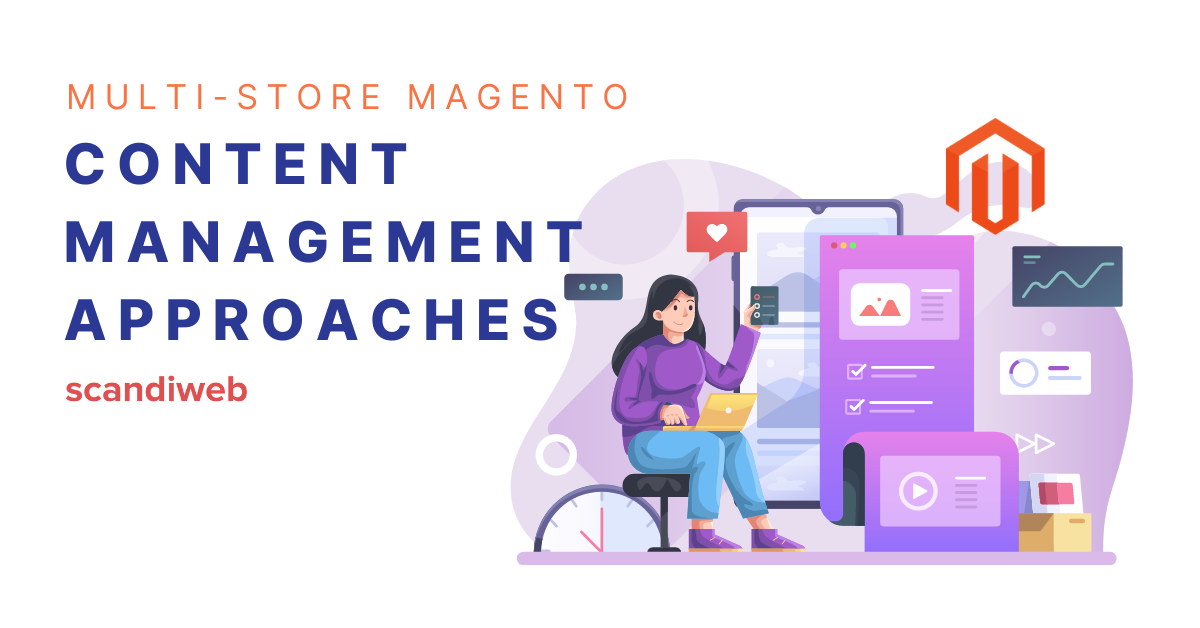For many eCommerce stores, certain categories are promoted on the homepage via the hero banners. For some, these categories are the same for all store views. This can be done by creating separate CMS blocks with localized captions and target URLs are created for each store view. However, with a lot of store views, this can become a nightmare for content managers. That’s why we want to discuss several approaches for the management of content for multi-store websites, specifically those using the Magento platform.
Category promotion banners
We should not underestimate the power of the built-in tools. For category promotion banners, the Catalog Category link widget is very useful.
- The widget automatically provides localized category titles and URLs
- Minor CSS adjustments are needed to achieve the desired result
We mentioned that localized banners can be made by creating separate CMS blocks. Within a reasonable development time frame, you can achieve the same result by doing minor structural adjustments with CSS. In return, you will avoid creating multiple data patches for each CMS block and complicating the content manager’s life.
Widget for localized values
Custom titles, button captions, and the like, might require localization for each store view. The standard approach would be to create separate CMS blocks for each store view where we can specify localized values.
Again, separate CMS blocks with localized values need to be created and maintained for each store view. Managing a multi-store view setup requires significant efforts from content managers.
A custom widget (“Value per store”) with the possibility to specify localized values for each store view in 1 place. The widget is added to a global CMS block that is added to all target store views (pages, blocks).
Ultimately, use case possibilities for this widget are endless and with a little bit of CSS can use it in different forms— titles, button captions, etc.
💡 The most efficient way is to use static phrases from language packs. This functionality should be used when the particular content needs to be managed and changed frequently.
Customized Magento Page Builder elements
So you probably are already using the default Magento Page Builder elements such as Image and Buttons. But again, these elements do not provide much flexibility in terms of localization.
Again, we need to create separate items to be able to have values unique to the language of the store view.
Extend Magento Page Builder elements with WYSIWYG instead of regular inputs—this allows us to use widgets. In this case, the previously mentioned “Value per store” widget can be used.
Customized Page Builder elements:
- Image – inputs into WYSIWYG
- Image – possibility to build localized target URLs with product attributes as filters
- Button – inputs into WYSIWYG
Running a multi-store Magento site and struggling with managing localized content? Get in touch with the marketing team at scandiweb and we’ll come up with solutions specific to your needs. Drop us a line at [email protected] today.


Share on: